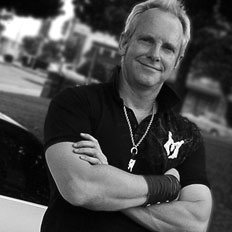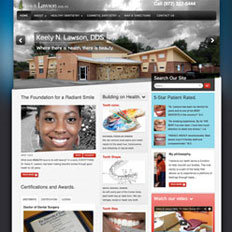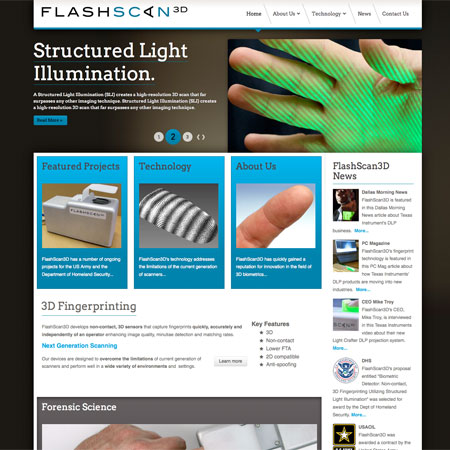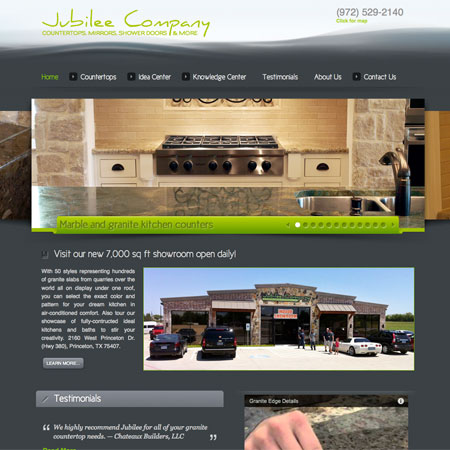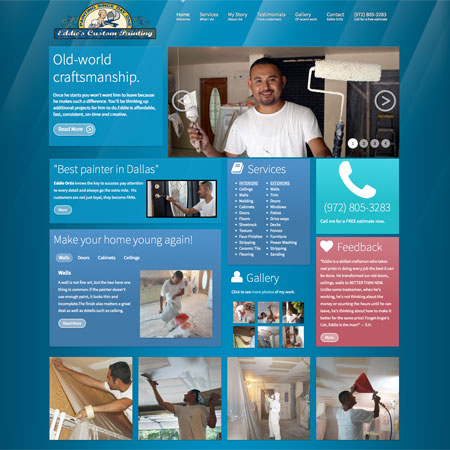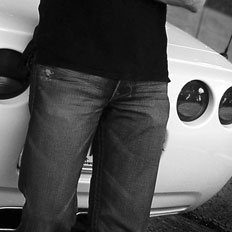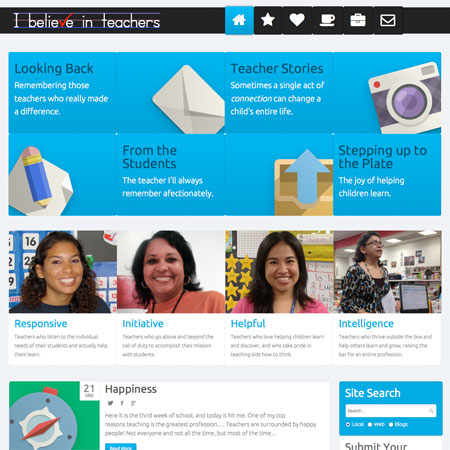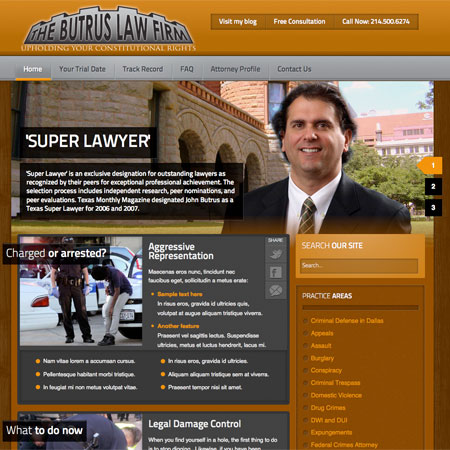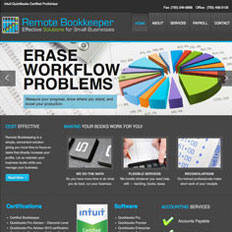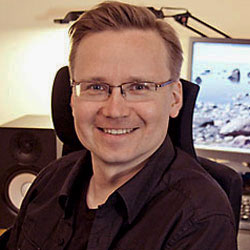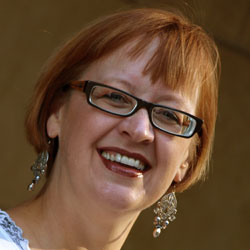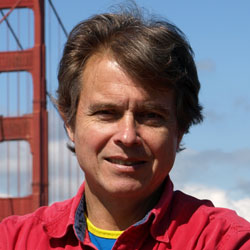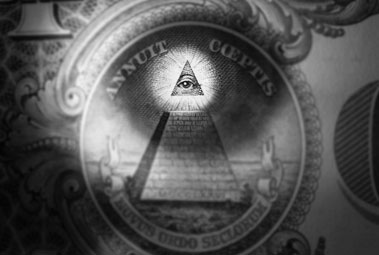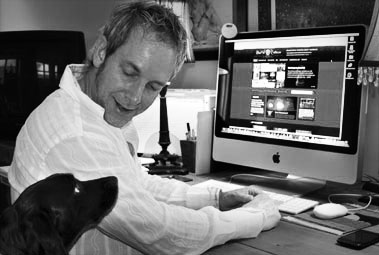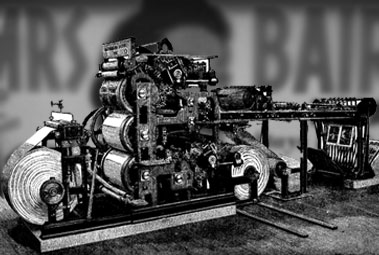Who is Steve Hall
- Details
- Published: Monday, 13 October 2008 22:53
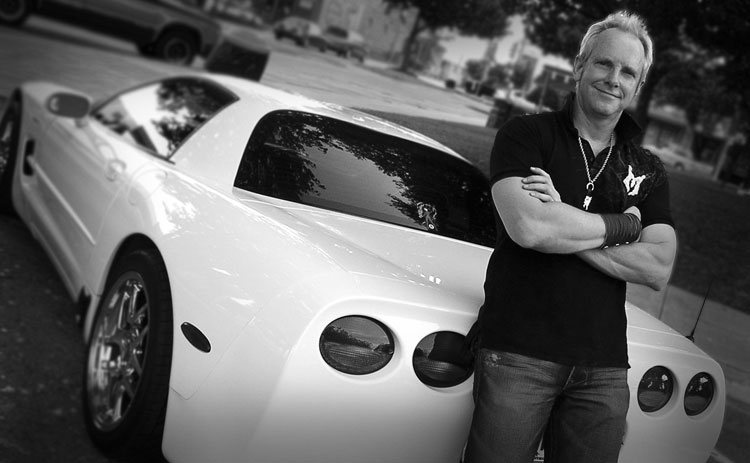
"A human being should be able to change a diaper, plan an invasion, butcher a hog, conn a ship, design a building, write a sonnet, balance accounts, build a wall, set a bone, comfort the dying, take orders, give orders, cooperate, act alone, solve equations, analyze a new problem, pitch manure, program a computer, cook a tasty meal, fight efficiently, die gallantly. Specialization is for insects."
— Robert A. Heinlein
I’m still working on some of the above.
But within the field of marketing I’ve already marked off quite a few additions to Robert Heinlein’s list.
In a nutshell I'm pretty savvy with a number of things. You can see examples in this website and judge for yourself. Anything I do, I try to do well. And what I don't do well, I don't do. Like cooking.
What excites me the most is creative strategy, websites, SEO and print ads. Of course that includes a bunch of other skills. For example, what do you think requires more skill? Print ads or TV? It's the print ad. A print ad must deliver it's message instantaneously. It's a power chord of copy, headline, image, layout. Whereas with TV you have an entire 30 seconds to string it out. I'm not saying TV is easy. Just, anyone that can do print, can do the rest. Anyone who can do TV, can not necessarily do print at all. Print is the core and heart of advertising skill. And it's actually my favorite medium.
Another thing I really like is creative strategy. Which has quite a number of amazing applications. I've currently got a multi-billion dollar nefarious organization TKO'ed thanks to a marketing campaign I rolled out in 2008 which mobilized an army of whistle blowers against their corporate corruption. They still don't know what hit them. They can't conceive of the fact that preceeding all the whistle blowers, someone came up with a strategy that mobilized the revolt. But more on that later.
Those are the four marketing-related things that excite me the most. Creative strategy, websites, SEO, and print ads.
Here’s what I can’t do: butcher a hog. Conn a ship. Cook a tasty meal. And understand the “logic” behind Quick Books.
Now that you know everything pertinent about me, there is lots of irrelevant stuff which follows. Read on at your own risk and please stop if you get bored.
A Biographical Sketch
My parents met in art school. I'm not sure which gene is responsible for creativity, but I know it's the one nine out of ten copywriters recommend.
Growing up in my house, endless conversation always revolved around marketing. My father was an art director at Tracy Locke and handled many of their larger clients including Frito Lay, Borden's Milk, Mrs Baird's Bread, Cabana Banana, Haggar Slacks, and Pearl Beer (which was the bestselling beer in Texas 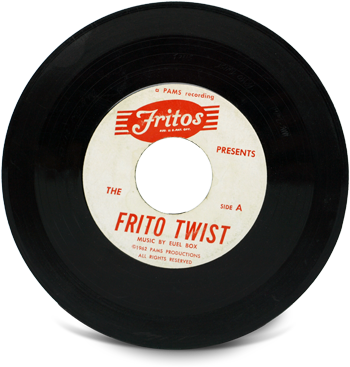 until Coors came along). My sister and I were frequently drafted to appear in ads guzzling Borden's milk or posing with prop bags of potato chips that looked full yet contained only air.
until Coors came along). My sister and I were frequently drafted to appear in ads guzzling Borden's milk or posing with prop bags of potato chips that looked full yet contained only air.
The Frito Twist
My induction into the wild world of advertising began in December 1962, when I was 3. My dad brought home a 45-rpm record with a clever tune called the Frito Twist. On the reverse side, a man and woman alternately explained how to do the Frito Twist. Even at 3, I thought it was funny. Funny adults actually believed they could inspire a dance craze named after a corn chip. Shouldn't the Frito Twist have involved eating some Fritos? In the early '60s, there was apparently no need to explain anything or connect the dots for folks. Why not push promotional Fritos hairspray? Or a promotional Fritos trampoline? Though I actually liked the song, I couldn’t see how it would ever catch on. Apparently it never did.
On the Set
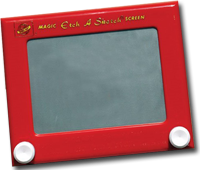 I was 8 when I learned how TV ads were made. I got a starring role. Some kid whose name I didn’t know knelt beside me and together we were to play with an Etch-A-Sketch in a mocked up living room at the Jamieson Film Company on Bryan Street. Blinding lights blazed down while directions were whipped upon our backs from the total darkness beyond the lights. “Action!” “Okay, look happier!” “Get even more excited!” “Okay, we need you to look even happier.” “Wiggle around more. Come on boys.” And so through the Looking Glass we went into a Wonderland of glee as the camera rolled… from mild amusement to madly, insanely happy… to deliriously happy. From this I learned the enthusiasm portrayed in ads was false. My shock was mollified by the receipt of my first pay check (for a fantastic sum in 1966). And a free Etch-A-Sketch. I dutifully saved my check in a box for 3 years dreaming of
I was 8 when I learned how TV ads were made. I got a starring role. Some kid whose name I didn’t know knelt beside me and together we were to play with an Etch-A-Sketch in a mocked up living room at the Jamieson Film Company on Bryan Street. Blinding lights blazed down while directions were whipped upon our backs from the total darkness beyond the lights. “Action!” “Okay, look happier!” “Get even more excited!” “Okay, we need you to look even happier.” “Wiggle around more. Come on boys.” And so through the Looking Glass we went into a Wonderland of glee as the camera rolled… from mild amusement to madly, insanely happy… to deliriously happy. From this I learned the enthusiasm portrayed in ads was false. My shock was mollified by the receipt of my first pay check (for a fantastic sum in 1966). And a free Etch-A-Sketch. I dutifully saved my check in a box for 3 years dreaming of  all the different ways I might spend it, only to find out (when I finally selected the object of my dreams) that checks are void after 90 days. I still have the check. And a distaste for false advertising.
all the different ways I might spend it, only to find out (when I finally selected the object of my dreams) that checks are void after 90 days. I still have the check. And a distaste for false advertising.
Big Business
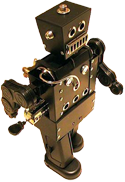 I started my first business when I was 8, running a consignment store in our garage. It was just after Christmas and every kid I knew had toys they didn't want. With this marketing insight, I designed my business model. Promotion was by word of mouth. No one could sell toys unless they brought in a customer. Kids brought toys from blocks around. It was a great success. My mother went along with it too even though she was dismayed to learn that in some cases we were selling new toys for pennies on the dollar. For us kids though, it was still a win-win proposition. I handled all the transactions from a small cardboard box on a TV tray. A sign on the wall said, “CASH HERE” which I assumed was the logical spelling of the word, "cashier." It still kinda make sense.
I started my first business when I was 8, running a consignment store in our garage. It was just after Christmas and every kid I knew had toys they didn't want. With this marketing insight, I designed my business model. Promotion was by word of mouth. No one could sell toys unless they brought in a customer. Kids brought toys from blocks around. It was a great success. My mother went along with it too even though she was dismayed to learn that in some cases we were selling new toys for pennies on the dollar. For us kids though, it was still a win-win proposition. I handled all the transactions from a small cardboard box on a TV tray. A sign on the wall said, “CASH HERE” which I assumed was the logical spelling of the word, "cashier." It still kinda make sense.
Scripting my First TV Spot
 A year later, I decided to launch my professional career as in advertising. I asked my father if I could write a TV spot for one of his clients. "Sure," he said. So I sat down on a Saturday morning and came up with a 30-second spot for Pearl beer. I did my story boards and presented it to my dad. He liked it so much, he story boarded it himself and presented it to Pearl: two divers in wetsuits emerge from the surf carrying a giant oyster. They lay it on the sand, pry it open, to reveal (TA-da!) ice-cold cans of Pearl beer (on ice). But the wise managers at Pearl didn’t want to associate a beer named "Pearl" with a rare, fine and invaluable treasure universally admired by everyone. Pearl beer was "from the country of eleven-hundred springs" and the ocean.
A year later, I decided to launch my professional career as in advertising. I asked my father if I could write a TV spot for one of his clients. "Sure," he said. So I sat down on a Saturday morning and came up with a 30-second spot for Pearl beer. I did my story boards and presented it to my dad. He liked it so much, he story boarded it himself and presented it to Pearl: two divers in wetsuits emerge from the surf carrying a giant oyster. They lay it on the sand, pry it open, to reveal (TA-da!) ice-cold cans of Pearl beer (on ice). But the wise managers at Pearl didn’t want to associate a beer named "Pearl" with a rare, fine and invaluable treasure universally admired by everyone. Pearl beer was "from the country of eleven-hundred springs" and the ocean.
Instead of giving up, my dad came up with a more subtle execution—a billboard that said, “String a pack of Pearls.” The visual was six empty beer cans with a string going through. The headline had great alliteration and appealed to the heavy drinker to guzzle down a whole six pack. Billboards went up all over Texas. Pearl never knew the positioning idea came from a 9-year old. I kept the story boards on my wall as a souvenir.
On Location at Lion Country Safari
 Maybe my most memorable advertising experience came a year later in 1968 with a television ad for Lion Country Safari. It was a drive-through animal park in Arlington, Texas billed as one of America’s first cage-less zoos. My mission was to ride in the back seat of a shiny red rented sedan with my sister, while our actor “parents” sat in front. My dad and a shoot team were outside filming. We drove by lions, rhinos, and finally, baboons. The crew figured out how to get the shy animals to "put on a show" for the camera. The plan was simplicity itself. Crates of sliced apples were thrown onto the car. Seconds later 20 or 30 baboons surrounded us. Strong fingers promptly tore from our rented Oldsmobile the windshield wipers, chrome trim and radio antenna. Then came the show. Jacked up on fruit (or maybe they just hated red Oldsmobiles) they defecated all over the car then launched into a frenzied gladiatorial orgy, whacking the car with the antenna and wipers, smearing apples, poop and urine on the windows with their feet and hands. Strangely, the fierce energy of the baboon show produced a Medusa-like effect on those of us trapped inside the car as only seconds into the performance each one of us silently turned into stone. Abruptly, the crew turned away and began to pack up camera gear (and remaining apples which didn't seem to have a beneficial effect). 20 minutes later, back in the parking lot, we emerged from the red hell box still too stunned to speak coherently. The crew turned a fire hose on the car. Somehow, a regular hose just wasn't enough. But nothing could wash away the shock. The final ad didn’t have any baboons in it.
Maybe my most memorable advertising experience came a year later in 1968 with a television ad for Lion Country Safari. It was a drive-through animal park in Arlington, Texas billed as one of America’s first cage-less zoos. My mission was to ride in the back seat of a shiny red rented sedan with my sister, while our actor “parents” sat in front. My dad and a shoot team were outside filming. We drove by lions, rhinos, and finally, baboons. The crew figured out how to get the shy animals to "put on a show" for the camera. The plan was simplicity itself. Crates of sliced apples were thrown onto the car. Seconds later 20 or 30 baboons surrounded us. Strong fingers promptly tore from our rented Oldsmobile the windshield wipers, chrome trim and radio antenna. Then came the show. Jacked up on fruit (or maybe they just hated red Oldsmobiles) they defecated all over the car then launched into a frenzied gladiatorial orgy, whacking the car with the antenna and wipers, smearing apples, poop and urine on the windows with their feet and hands. Strangely, the fierce energy of the baboon show produced a Medusa-like effect on those of us trapped inside the car as only seconds into the performance each one of us silently turned into stone. Abruptly, the crew turned away and began to pack up camera gear (and remaining apples which didn't seem to have a beneficial effect). 20 minutes later, back in the parking lot, we emerged from the red hell box still too stunned to speak coherently. The crew turned a fire hose on the car. Somehow, a regular hose just wasn't enough. But nothing could wash away the shock. The final ad didn’t have any baboons in it.
Magic
When I was eleven I got some books and started to practice magic. After a string of successful performances to family and friends I joined the Dallas chapter of Magical Youths International and became their secretary for a year. MYI was the junior branch of the International Brotherhood of Magicians and we had fun comparing notes and swapping tricks. I performed at birthday parties but found magic to be a rather nerve-wracking, stressful undertaking. Stage magic of course depends on misdirection... and silence from any Ralph Naders in the audience who might happen to spot a ruse. The last thing any magician wants is to be exposed. So after a couple of years I left it behind. Magic is best in small doses since everyone knows it depends on misdirection.
Film Production
At 13, for a school project, I set out to tackle important environmental issues through film production. It was a before and after exposé… weeds growing unkempt, litter against the fence, dirty dishes, trash overflowing… Then, the same spaces properly cared for. I wrote the script and directed. My best friend was cameraman. Parents and teachers all came for open house. When the lights dimmed and the crowd hushed we presented our film complete with recorded music and narration. The silver screen revealed a hard-hitting message of environmental activism! To my mother (who was also seeing our film for the first time) it portrayed something more: her home in the worst possible light. This experience taught me how different people can react in different ways: some with mild amusement, some with catatonic shock. It also taught me never to use your mother's home in an exposé. Use the neighbor’s home. And don’t invite them to the premiere.
Booth Design
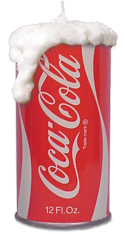 After brief stints as a cleaner at my father's boutique advertising company, Hallmar Studios, I became president of a Junior Achievement company called Student Productions sponsored by Sears. Our first product was the Harvey Wall Hanger. Christmas sales were lagging and we were barely breaking even. So I dreamed up a new product of my own creation, the Canned Candle, and sales took off. Toward the end of the year, we got a booth at the Northpark mall. To decorate the booth, my Dad suggested I call the Presidents of Coke-a-Cola, Dr. Pepper and Schlitz beer, explain my position and ask for promotional materials. I thought he was crazy: Why would the President of Coke-a-Cola even take a call from a 14-year old? He explained that's exactly why they would take the call. Finally, he overcame my trepidation and I made the calls. The result: Coke, Dr Pepper and Schlitz loaded me up with groovy vacuum-formed signs and even a big metal Coke-a-Cola clock... By the end of the year we liquidated and repaid investors with a 10% dividend.
After brief stints as a cleaner at my father's boutique advertising company, Hallmar Studios, I became president of a Junior Achievement company called Student Productions sponsored by Sears. Our first product was the Harvey Wall Hanger. Christmas sales were lagging and we were barely breaking even. So I dreamed up a new product of my own creation, the Canned Candle, and sales took off. Toward the end of the year, we got a booth at the Northpark mall. To decorate the booth, my Dad suggested I call the Presidents of Coke-a-Cola, Dr. Pepper and Schlitz beer, explain my position and ask for promotional materials. I thought he was crazy: Why would the President of Coke-a-Cola even take a call from a 14-year old? He explained that's exactly why they would take the call. Finally, he overcame my trepidation and I made the calls. The result: Coke, Dr Pepper and Schlitz loaded me up with groovy vacuum-formed signs and even a big metal Coke-a-Cola clock... By the end of the year we liquidated and repaid investors with a 10% dividend.
Displays and Visual Merchandising
 At 17 I got a job selling jeans at The Gap. When their display artist quit I asked our manager if I could try my hand at it. In those days, display artists used wire to make clothing float in midair as if by... magic, which was already perfectly suited to my skill set. I taught myself how to do displays by observing how other displays were done. When the corporate suits came round to inspect, they were so impressed they named me their Southwest Regional Display Manager. My income went up dramatically. Then I found out the real money was not in retail but in the wholesale end of the display industry. And Dallas was one of the largest centers for wholesale apparel in the United States. My best friend's dad was a sales rep who promptly invited me to do his showroom at the Dallas Apparel Mart. That launched my freelance business and within a year I was one of three top display artists in Dallas handling both retail and wholesale markets. In the wholesale end, my clients were business owners and salesmen who attended markets throughout the world. They often told me that my work was the best they'd ever seen. It was nice at that young age to become the world's best at something. I was still in college (studying art and writing).
At 17 I got a job selling jeans at The Gap. When their display artist quit I asked our manager if I could try my hand at it. In those days, display artists used wire to make clothing float in midair as if by... magic, which was already perfectly suited to my skill set. I taught myself how to do displays by observing how other displays were done. When the corporate suits came round to inspect, they were so impressed they named me their Southwest Regional Display Manager. My income went up dramatically. Then I found out the real money was not in retail but in the wholesale end of the display industry. And Dallas was one of the largest centers for wholesale apparel in the United States. My best friend's dad was a sales rep who promptly invited me to do his showroom at the Dallas Apparel Mart. That launched my freelance business and within a year I was one of three top display artists in Dallas handling both retail and wholesale markets. In the wholesale end, my clients were business owners and salesmen who attended markets throughout the world. They often told me that my work was the best they'd ever seen. It was nice at that young age to become the world's best at something. I was still in college (studying art and writing).
With a successful career already unfolding, I took a break from college and set out across the country hitting apparel trade shows. Soon I branched out into booth design and showroom design for companies like Candies, 9-West and Maidenform.
Marketing Product Manager
After 10 years in visual merchandising, I was ready to try something new. So in 1987 I moved to Los Angeles where I took a position as product manager for a marketing group launching new products and writing marketing campaigns. I launched new products, executed campaigns, supervised media buys, went on press checks, produced TV and radio ads, re-engineered pricing and ran both successful and unsuccessful promotions thereby learning the ropes.
Design and Copywriting
Three years later, I was offered a position as art director. That was before computers when final art was still done by hand. I quickly learned how to airbrush. Then came the Mac and soon I was designing promo using Quark Express. On the side I continued to read books and take courses learning more about integration, composition, mood lines and color. And also, writing.
A year later, I became a copywriter. In writing I found the core of my creative strength. I studied everything I could find about copywriting and after a couple of years I had the opportunity to be mentored by one of the best copywriters in the United States, a brilliant man named Mike Whitlow. He ran a special course for copywriters called The Bookshop. His incredible Concept Training was open only to a handful of writers and art directors. I got in and studied under Mike for the next 2 1/2 years.
Creative Strategy
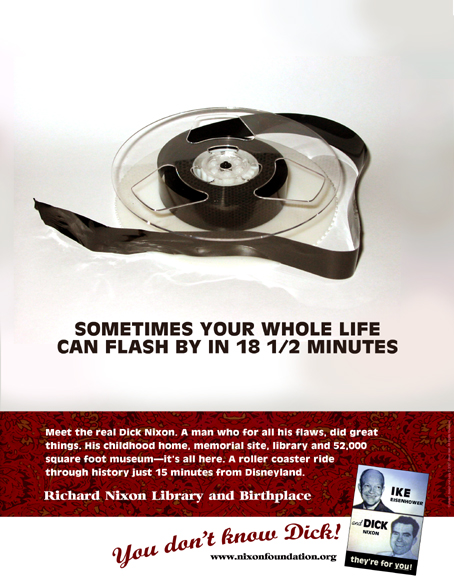
Mike sometimes assigned more difficult campaigns to push us. My first test was a campaign for the Richard Nixon Museum and Birthplace. How do you promote someone that half the world thinks is a crook? I begged for a different campaign since I was not a Nixon fan. My grandmother was a political activist who hated "Tricky Dick." We watched the Watergate trials together and she often said, "Steve, that Nixon is as crooked as a dog's hind leg!" Mike refused to let me substitute. So I traveled to the Richard Nixon Museum and Birthplace and I learned much more about Nixon than I thought existed. I found out that as is so often the case, there was another side to the man. He opened up China. On his watch Apollo 11 astronauts landed on the Moon. And he did finally end the Vietnam War. Without white washing any of his reprehensible acts, I saw that he was part of history and was worth anyone learning more about. The museum was interesting and really worth the trip. So I came up with a campaign that acknowledged the bad along with the good. At the bottom, next to a campaign poster of him and Eisenhower was my tag line, "You don't know Dick." By strategically acknowledging Nixon's flaws, I discovered that it was possible to do good marketing and retain honesty. Mike called it the greatest tag line ever written and I learned that honesty was the only rudder by which one could navigate a public relations storm.
Knowing how to do something is different from having the skill to actually do it. Lots of people know how to play golf. But few can swing like Tiger Woods. And so it is in advertising. Copywriting is a skill that takes practice and expert guidance to master. During those years I made it my business to ask every question I could think of and eventually as my mentor put it, I "turned the corner" achieving the skill to rise above the level of merely good into the realm of great, every time.
Scriptwriting
After mastering copywriting, I went on to scriptwriting and enjoyed a good deal of success there as well. I scripted more than 125 films and videos. Just two of them were credited with a $65 million boost in revenue over 6 months. I continued also to design displays.
Websites and Search Engine Optimization
In 2001, I learned how to use Dreamweaver and started creating websites. In 2002, I started studying and working with SEO when the subject was still in its infancy. Websites were not only the wave of the future, they were a unique medium that enabled me to draw upon my full range of marketing and creative skills. Even large mega agencies are limited by the fact that their computer geeks don't know marketing. Their marketing people don't know computers. Their art directors can't write copy. And their copywriters can't design. Yet good marketing requires all these skills and more. It helps to have all the skills in one person.
 |
|
| In March 2007 I went to China to coordinate production during my 3-year stint as Chief Marketing Officer of a manufacturing company. |
Manufacturing
In the early 2,000s took control of fledgling manufacturing company with annual gross sales in six figure range and embarked on a series of projects driving major infrastructure improvements in presentation, quality management, strategic organizational change, communications, human resources and process reengineering. Oversaw national marketing, advertising, public relations, R&D and quality control of new and existing products plus ran manufacturing operations in the US and China. Efforts grew business revenues by 315% in 12 months, increased company size by 600% and gained national prominence for its product line. Launched 27 new products, driving research and development from concept to release: market research, prototypes, testing, specs, costing, sourcing, sample manufacture, package design, blister/clamshell, warnings, copyrights & trademarks, UPC codes, case pack/inner pack specs, labeling, production, warehousing, inventory, public relations, promotion, sales, shipping, customer service, quality enhancement and defect reduction.
- Managed factory production in China and import supply chain (sourcing, ocean and air freight, interface with Customs and brokers). Established production lines from molding process to final packaging, monitoring and adjusting procedures for quality and profitability.
- Helped forge alliances with NFL, NBA, MLB and NHL to market products using professional team logos; and with the CLC (Collegiate Licensing Co.) for collegiate teams.
- Made key sales calls and client acquisition contributing to repeat orders from Target and Wal-Mart. Coordinated with Wal-Mart through Retail Link.
- Directed public relations efforts making headlines in high-profile periodicals and networks including The Dallas Morning News, Stuff Magazine and NBC.
- Designed and implemented marketing plans integrating packaging, merchandising, advertising, collateral, sales tools, literature, trade show booths and displays.
Freelance Creative
In May, 2007 I started Steve Hall Creative focusing on cutting-edge web design and creative strategy, SEO, logo design and collateral. Some of the industries I've assisted include heathcare, medical, dental, skin care, investment funds, credit, consulting, marketing, manufacturing, real estate, technology, electronics, investigations, law, court reporting, bookkeeping, exhibits, construction, entertainment, fashion, publishing, haircare, tourist, non-profit, and children’s products.
- Engineered grassroots marketing strategy for local start up that helped change public opinion and practices regarding health and hygiene in its niche market through a community-awareness campaign run in concert with the City of Dallas.
- Grew scores of companies of all sizes with effective marketing and creative including international corporations, mid-level companies, start ups and even a national credit bureau, bringing them from obscurity to strong online presence and page one listing of Google.
"Nuture Your Inner Guerrilla"
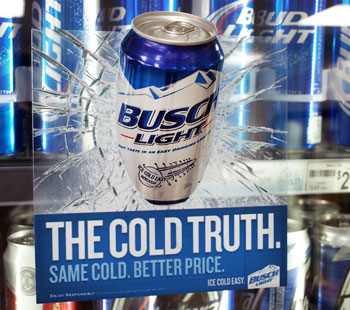 |
|
| Break Thru Designs makes guerilla marketing products for product promotions. |
In 2008 I started Break Thru Designs, a guerrilla marketing and micro-manufacturing company. Break Thru is a manufacturer of 3D window decals. Our speciality is cutting things in half and bonding them to a decal. Our primary focus is on sport products included baseball, hockey, softball and golf, plus we do plastic bottles, aluminum cans and cardboard boxes — each bonded to a decal. We've created guerrilla products for Busch Light, Mike's Hard Punch, Corona, PowerBall, Milgard, Safelite, Mutual of Omaha, and many more. We helped launch the HBO TV show, “Eastbound and Down” with a viral marketing campaign in spot markets (NY and L.A.).
In 2009, I also married and now have a beautiful daughter, which enabled me to check off another item from Robert Heinlein’s list: "A human being should be able to change a diaper..."
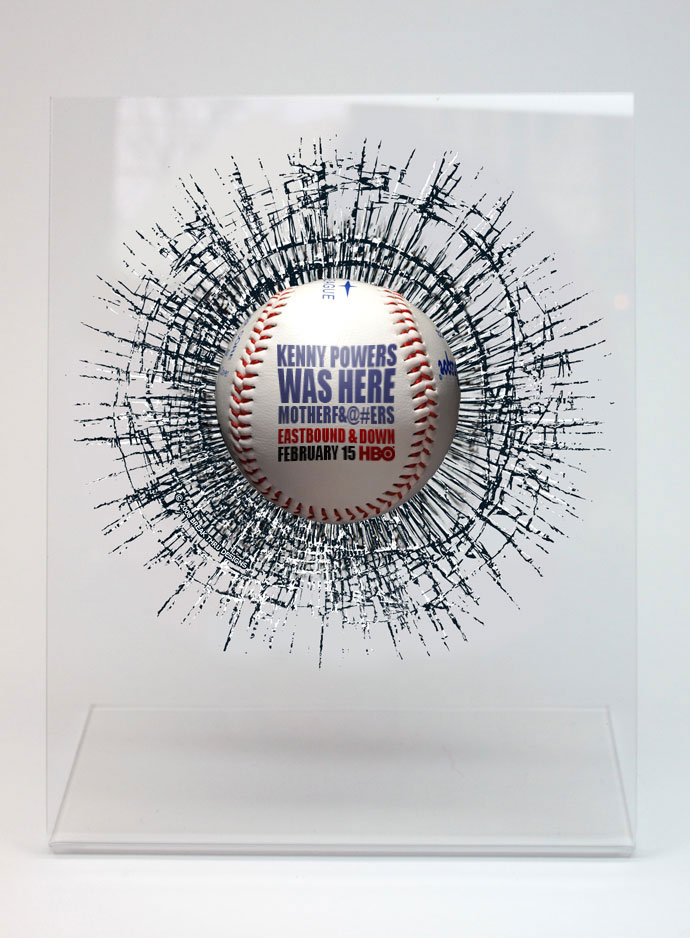 |
| Another product from Break Thru Designs created for the launch of HBO's comedy, East Bound & Down. |
My services are always available to assist on any project as a creative or consultant. I spend most of my time creating websites where I am able to bring together all my skills including SEO, creative strategy, copywriting, design, logos, ads, photography, brochures and more as most companies suffer from the lack of real marketing.
If you want your project to succeed, get the best marketing person you can get: someone with a proven track record of performance and products you can see for yourself.
Steve Hall
Web Design Portfolio
- Details
- Published: Thursday, 23 October 2008 19:31
As you will notice, I have a large web design portfolio and I build rather large websites because, as a general rule, Google doesn't pay attention to small, dinky sites. It's not a fault. There are 635 million websites to choose from, so only the best are going to get air play because no one wants to see the worst. Drop me a line and tell me about your project. I will be happy to give you my recommendations and with a free quote for my services. for immediate assistance call me at 214-828-9334.
Google handles most of the searches in the world. Just 10 search results are displayed on each page. When someone does a search, Google wants to hand out the results that seem most likely to satisfy the searcher's needs whatever they are. But Google doesn't necessarily know exactly what the person is looking for because most searches are vague. "Taxes" doesn't tell them if you are looking for a tax professional, looking for the IRS website, or if you are looking for advice on how to prepare your own taxes. So Google tries to cover their bets by handing out sites that offer both tax preparation services AND advice on how to prepare your own taxes.
That is why a small, dinky website is usually a waste of money.
The rule is, if you want to get noticed online and get your share of traffic, GO BIG.
Here is my web design portfolio of some of the websites I've done starting with the newest sites first.
Creative Strategy
- Details
- Published: Friday, 24 October 2008 11:16
The late Bob Munden was undoubtedly the fastest gun slinger who ever lived. He could draw, shoot, and re-holster his gun in 0.02 seconds. That’s faster than you can blink. He could shoot twice so quickly people would hear and see only one shot. He could shoot coins out of the sky. Split cards in half edgewise. That’s just the start of what he could do.
Lots of people know how to shoot. Know alllll about it. What did Bob have that they didn’t have?
Skill.
But you’d never have known it just to look at him. Skill is an invisible thing. Look at two people standing side by side, one with skill, the other without. You can’t really tell by looking who has skill. If you didn’t know what Bob Munden looked like, you would have probably never picked him out of a crowd as someone with an almost superhuman level of skill.
Similarly, copywriting is not merely about knowing how to write ads. It is also about skill and attaining that skill — a different thing. Natural talent can help. Knowledge is a necessity. But skill is what takes you down the road and gets the job done at the level of “spectacular.”
Bob Munden’s spectacular level of skill was firing a bullet like a laser beam. At 200 yards, he could shoot a snub-nose revolver with the accuracy of a sniper. Bob’s skill was so high, he shot from the hip, instinctively. He simply “knew” where the bullet would go. That’s skill.
Now what is the skill of an advertising creative?
I can tell you. Because I know.
Problem solving
I can look over a sea of facts, a thousand different items, and pull out the one fact around which everything else revolves. And then from that, I can create a strategy that solves the entire mess. And I can do it at any level: small company, large company, state government, federal agency, defense department, international — it doesn’t matter. The principles and the skill required to apply those principles are the same regardless of scale.
I can tell you exactly “what” it will take (meaning which single concept to communicate) in order to persuade a given group of people to want a seemingly unrelated product; I can find the common ground that will connect them. And I can establish what concept will be most likely to cause them to want to connect. When there seems to be an entire sea of problems surrounding a product or a company, I can tell you which problem is the key to unlocking all the other problems. I can produce and hand over to you the one single key to insert in which exact single lock, which will cause all the other locks to magically open. I can forge one silver bullet that slays the worst marketing nightmare. That’s what creative strategy is for. That is it’s use.
Bob Munden can shoot. I can also shoot. He shoots targets. I shoot problems, and hopefully take them down with one shot.
Creative strategy is about the discovery and manipulation of ideas. The only way to change behavior is to change the ideas behind that behavior. “That’s psychology” someone might say. Well, maybe so. But it’s done every day in every corner of the world. What does a teacher do except change a person’s set of ideas? What does religion do except change ideas?
Everyone on earth is involved in the manipulation of ideas somehow. Creative strategy just takes a bit more sophisticated course by adding some art to the science, and science to the art.
Constructing with ideas
Ideas are the nails, screws and two-by-fours of the copywriter. And just as a carpenter has every kind of woodworking tool, so the copywriter has an enormous tool box of ways to think about ideas.
For any given problem in copywriting, I can rattle off a dozen methods of approaching that problem to find a resolution. If one tool doesn’t work another one will. It’s inevitable since there is no such thing as a problem that cannot be solved.
Everything, really, starts with an idea. Behind everything we have. Behind everything we do. Behind everything we want and everything we argue about, are ideas.
Creation is not a single act. It is a process. But if the right ideas are not all in place, the process may hang up. In reality, there are always conflicting ideas. That’s why it often requires strategy to resolve complex marketing problems.
The world of ideas behind our material world is just as amazing and fascinating, and what a place to explore!
A copywriter is a specialist in coming up with the right ideas to solve specific problems, usually used to resolve problems related to a business. But don't assume that is its only application. That would be a gross underestimation of the power of creative strategy.
Old School
Traditionally, copywriters were the ones who came up with the creative strategy. Everything starts with the concept. The toughest thing to learn is not writing. It is how to come with the idea. That is what takes the skill.
In an ad, you aren't selling the product. You are selling the benefit. Once you click into that, you're 2/3rds there on understanding what advertising and marketing are all about. That's it; in that those five words: "you are selling the benefit." Selecting what benefit to discuss is a key component of creative strategy.
Of course there's a lot more to it than that. For example, we are all used to seeing certain things. We notice the unusual. When you see a person running a red light, you notice. But if we lived in a country where everyone ran red lights, it would be unusual to see someone stop.
So in advertising, we are trying to get someone to notice something different in a sea of similar things called ads. So we have to do something different — always, always, always — something different that makes a relevant point. Different, but never non sequitur.
For many years, McDonalds ads sold family. You can get your first job there. Work there after you're retired. Bring your kids there. Family is what people value. So family is the connection that makes McDonalds relevant.
Nike ads don't sell shoes. They sell the benefit of inspiration. “You get these shoes, you are going to be inspired to run.” They say that because inspiration is what people actually want. So inspiration is the connection that makes Nike shoes relevant.
In creative strategy, the question we ask is what one point are we going to make to the target public to get them to accomplish the objective, i.e., buy one, come in for a test drive, try a sample, test it for 30 days, request more info, take action, whatever.
Have a problem? Perhaps creative strategy is just what you are missing.
